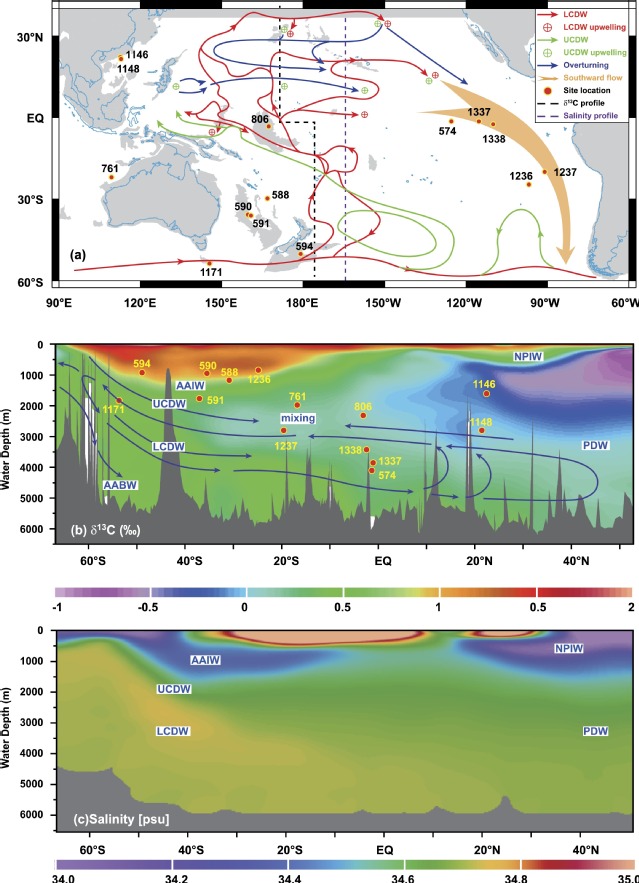Xiaolin Maa,b, JunTiana, Wentao Maa,c, Ke Lia, Jimin Yua,d
a State Key Laboratory of Marine Geology, Tongji University, Shanghai, 200092, China
b State Key Laboratory of Loess and Quaternary Geology, Institute of Earth Environment, Chinese Academy of Sciences, Xi'an, 710075, China
c State Key Laboratory of Satellite Ocean Environment Dynamics, Second Institute of Oceanography, SOA, Hangzhou 310012, China
d Research School of Earth Sciences, the Australian National University, Canberra, ACT 2601, Australia
Abstract:
East Antarctic ice sheet expansion (EAIE) at ∼13.9Ma in the middle Miocene represents a major climatic event during the long-term Cenozoic cooling, but ocean circulation and carbon cycle changes during this event remain unclear. Here, we present new fish teeth isotope (εNd) and benthic foraminiferal B/Ca records from the South China Sea (SCS), newly integrated meridional Pacific benthic foraminiferal 18O and 13C records and simulated results from a biogeochemical box model to explore the responses of deep Pacific Ocean circulation and carbon cycle across EAIE. The εNd and meridional benthic 13C records reveal a more isolated Pacific Deep Water (PDW) and a sluggish Pacific meridional overturning circulation during the post-EAIE with respect to the pre-EAIE owing to weakened southern-sourced deep water formation. The deep-water [CO32−] and calcium carbonate mass accumulation rate in the SCS display markedly similar increases followed by recoveries to the pre-EAIE level during EAIE, which were probably caused by a shelf–basin shift of CaCO3 deposition and strengthened weathering due to a sea level fall within EAIE. The model results show that the ∼1‰ positive 13C excursion during EAIE could be attributed to increased weathering of high-13C shelf carbonates and a terrestrial carbon reservoir expansion. The drawdown of atmospheric CO2 over the middle Miocene were probably caused by combined effects of increased shelf carbonate weathering, expanded land biosphere carbon storage and a sluggish deep Pacific meridional overturning circulation.
Full article:https://www.sciencedirect.com/science/article/pii/S0012821X17307008



